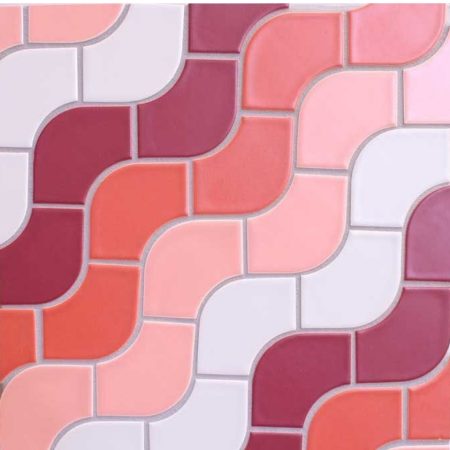science new spaces in frontiers
Can Hidden Spaces Reveal New Frontiers in Science and Gaming
Building upon the foundational idea that exploring unseen, inaccessible, and uncharted areas can unlock new scientific and gaming frontiers, virtual and augmented spaces have become pivotal tools. These digital realms enable us to transcend physical limitations and access hidden dimensions of knowledge and experience. As we delve deeper, it becomes evident that technological innovations are transforming our ability to uncover and understand these concealed spaces, forging a compelling connection between virtual explorations and real-world discoveries.
For those interested in the origins of this transformative journey, revisit the article Can Hidden Spaces Reveal New Frontiers in Science and Gaming to understand the initial premise about the potential of hidden realms. Now, let’s explore how modern technology is bridging the gap between imagination and reality, opening doors to unprecedented scientific and gaming advancements.
1. The Evolution of Virtual and Augmented Spaces in Modern Exploration
a. From physical to digital: How technology transforms our perception of hidden realms
Historically, human curiosity drove explorers to physically venture into uncharted territories, from oceanic depths to remote caves. Today, digital technology allows us to simulate these environments virtually, making it possible to explore spaces that are otherwise inaccessible. For example, virtual reality (VR) enables immersive journeys through ancient ruins or microscopic worlds without leaving our homes. This shift from physical to digital exploration expands our perceptual boundaries, allowing us to study and interact with hidden realms in ways that were impossible before.
b. The role of immersive environments in expanding human understanding of unseen worlds
Immersive environments serve as bridges to unseen worlds, providing sensory-rich experiences that deepen comprehension. For example, NASA utilizes VR to help scientists visualize cosmic phenomena, revealing structures invisible to the naked eye. Similarly, archaeological teams reconstruct lost civilizations virtually, enabling researchers and students to walk through ancient cities. Such immersive tools not only enhance learning but also foster curiosity, encouraging exploration of hidden aspects of science and history.
c. Historical milestones: Bridging past discoveries with current virtual innovations
Milestones like the development of early computer graphics in the 1960s and the advent of VR headsets in the 1990s laid the groundwork for modern exploration tools. The Hubble Space Telescope’s detailed images in space, combined with real-time virtual simulations, exemplify how technological progress bridges the gap between discovery and digital representation. Today’s innovations continue this legacy, enabling us to explore hidden realms ranging from microscopic structures to distant galaxies with unprecedented clarity.
2. The Science Behind Virtual and Augmented Realities
a. The technological foundations: hardware, software, and sensory integration
Virtual and augmented realities rely on sophisticated hardware such as VR headsets, haptic gloves, and eye-tracking devices, integrated with powerful software that processes sensory data. These systems create convincing simulations by blending visual, auditory, and tactile stimuli, allowing users to perceive and interact with digital environments as if they were real. For instance, devices like the Oculus Quest or HTC Vive enable researchers and gamers to access complex, detailed virtual spaces seamlessly.
b. How virtual and augmented spaces simulate and reveal hidden aspects of real-world environments
By leveraging data from sensors, satellites, and microscopes, virtual environments can accurately recreate unseen facets of reality. In medical imaging, 3D reconstructions of organs reveal internal structures not visible externally. Similarly, augmented reality overlays can display underground pipelines or archaeological artifacts, revealing hidden infrastructure or historical secrets in real time. These simulations serve as powerful tools for scientists to analyze phenomena that are otherwise concealed.
c. Limitations and challenges in accurately representing unseen realms digitally
Despite rapid advancements, digital representations face challenges such as data resolution limits, latency issues, and interpretative inaccuracies. For example, simulating quantum phenomena or cosmic dark matter remains complex due to insufficient data and computational constraints. Ethical concerns also arise regarding data privacy and the potential for misinformation if virtual reconstructions are mistaken for actual representations. Overcoming these limitations requires ongoing research and technological refinement.
3. Unlocking Hidden Knowledge Through Digital Space-Exploration
a. Virtual archaeology: reconstructing lost civilizations and ancient secrets
Virtual archaeology employs 3D modeling and VR to recreate ancient sites, enabling detailed study without physical excavation. For example, the Virtual Reconstruction of Pompeii allows researchers to analyze Roman urban life and uncover hidden architectural features. These reconstructions can also reveal previously unknown aspects of cultural practices and settlement patterns, offering new insights into our distant past.
b. Scientific visualization: revealing microscopic and cosmic hidden structures
Advanced imaging techniques like electron microscopy and gravitational wave detection generate data that are visualized virtually, revealing structures invisible to conventional observation. The visualization of the human genome, for instance, has uncovered complex genetic arrangements, advancing personalized medicine. Likewise, cosmic simulations help scientists understand dark matter distribution, deepening our knowledge of the universe’s unseen fabric.
c. Augmented space as a tool for real-time scientific discovery and hypothesis testing
Augmented reality enables scientists to overlay data onto physical objects, facilitating immediate analysis. For example, surgeons use AR to visualize internal organs during operations, improving precision. Environmental scientists employ AR to simulate climate change scenarios, testing hypotheses in real time. These applications showcase how augmented spaces accelerate discovery and decision-making in scientific research.
4. Gaming as a Portal to Hidden Realms: Beyond Entertainment
a. Designing immersive worlds that mimic hidden spaces to inspire curiosity
Game developers craft worlds that emulate real or imagined hidden realms, encouraging players to explore and learn. Titles like The Legend of Zelda: Breath of the Wild or Subnautica immerse players in environments filled with secrets, encouraging discovery and curiosity about the unknown. Such design fosters a mindset of exploration, mirroring scientific discovery processes.
b. The potential of augmented reality games to uncover real-world secrets
Games like Pokémon GO demonstrate how AR can blend virtual elements with real-world environments, leading players to uncover hidden locations, historical markers, or even archaeological sites. These experiences promote active engagement with the physical world while subtly revealing concealed aspects, aligning entertainment with educational discovery.
c. Ethical considerations and responsibilities in revealing sensitive or concealed information through gaming
While games can uncover real secrets, ethical concerns arise regarding privacy, cultural sensitivity, and security. For instance, revealing sensitive archaeological sites prematurely or misrepresenting historical facts can cause harm or misinformation. Developers and researchers must balance entertainment with responsibility, ensuring that virtual exploration respects cultural heritage and avoids unintended consequences.
5. The Psychological and Educational Impact of Virtual and Augmented Spaces
a. Enhancing learning experiences by engaging with unseen aspects of science and history
Virtual and augmented environments provide immersive educational experiences, making complex scientific concepts accessible. For example, students can virtually explore the inside of a cell or walk through ancient ruins, leading to improved retention and understanding. These methods foster curiosity and encourage active participation, vital for deep learning.
b. Overcoming physical and spatial limitations in education through virtual exploration
Students in remote or under-resourced areas gain access to high-quality virtual labs and field trips. For instance, virtual safaris or space missions enable experiential learning without travel or equipment constraints. This democratization of exploration broadens educational horizons and inspires future scientists and explorers.
c. The influence of virtual spaces on perception, imagination, and curiosity about the unknown
Engagement with virtual realms enhances imaginative capacity and shifts perception about what is possible. Studies indicate that immersive experiences stimulate neural pathways associated with curiosity and creativity. This psychological shift encourages lifelong exploration and a proactive attitude toward uncovering hidden aspects of our universe.
6. Future Frontiers: The Potential of Virtual and Augmented Spaces in Scientific Discovery
a. Predicting technological advancements that will deepen our access to hidden realms
Emerging technologies like brain-computer interfaces and ultra-high-resolution displays promise to make virtual exploration more intuitive and detailed. For example, direct neural links could enable users to experience virtual environments purely through thought, drastically expanding our capacity to perceive and analyze hidden spaces.
b. The integration of AI and machine learning to uncover new hidden spaces within virtual environments
Artificial intelligence can analyze vast datasets from simulations, identifying patterns and anomalies that suggest previously unknown hidden realms. For instance, AI-driven algorithms have helped physicists detect subtle signals indicating new particles or cosmic phenomena, highlighting the synergy between AI and virtual exploration.
c. The role of virtual and augmented spaces in collaborative global research efforts
Platforms like virtual labs and shared AR environments facilitate real-time collaboration among scientists worldwide. This interconnectedness accelerates discovery, allowing diverse expertise to converge on uncovering hidden spaces, whether in deep-sea trenches or outer space. Such collaboration exemplifies how virtual spaces can become the nexus of future scientific breakthroughs.
7. Bridging the Gap: From Virtual Realms to Physical Discoveries
a. How virtual and augmented explorations inform and inspire real-world scientific breakthroughs
Virtual simulations often guide physical experiments. For example, virtual modeling of cellular processes has led to targeted drug development, and digital reconstructions of archaeological sites have prompted new excavation strategies. These instances demonstrate that digital exploration not only complements but actively drives tangible discoveries.
b. Case studies where digital exploration led to tangible discoveries in science and gaming
One notable example is the discovery of new exoplanets via data analysis of virtualized stellar environments. In gaming, virtual worlds like Minecraft have been used to simulate ecosystems, leading to real-world insights into biodiversity. These cases highlight the practical impact of virtual and augmented exploration across fields.
c. Returning to the parent theme: Can virtual and augmented spaces truly reveal new frontiers in science and gaming?
The evidence suggests that these digital realms are not mere simulations but active catalysts for discovery. They expand our perceptual toolkit, enabling us to perceive, analyze, and manipulate hidden spaces. As technology advances, virtual and augmented spaces will increasingly serve as gateways—bridging imagination with reality, and unlocking new frontiers previously beyond our reach.







